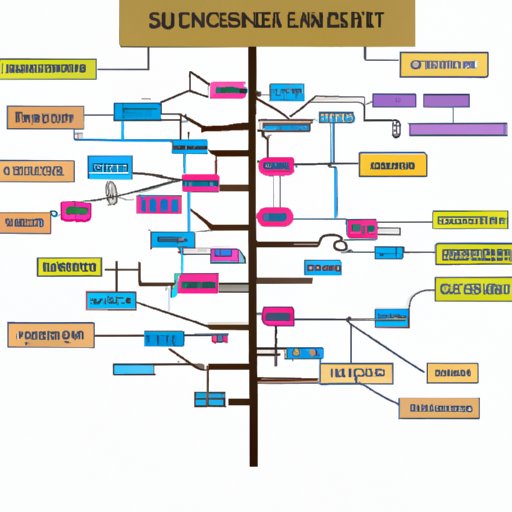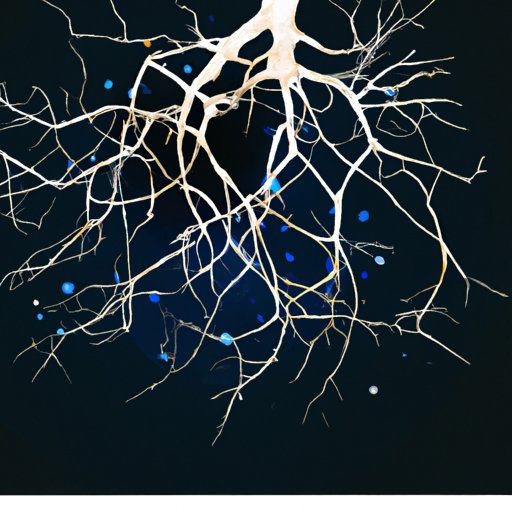Introduction
Science is an ever-evolving field that encompasses a wide range of disciplines. The term “science” refers to any systematic knowledge or practice that is based on observable facts and tested theories. Science is used to explain phenomena in the natural world, as well as to make predictions about future events. As such, it is a powerful tool for understanding the universe around us.
When it comes to the scope of science, there are many different branches that comprise the overall field. These branches include physical sciences, life sciences, earth and space sciences, and applied sciences. Each of these branches has its own distinct set of disciplines and focuses on different aspects of the scientific process.

Exploring the Varied Branches of Science
Physical sciences are those that focus on the study of matter and energy. This includes disciplines such as chemistry, physics, astronomy, and geology. These fields seek to explain the structure and behavior of matter and energy, as well as their interactions with each other.
Life sciences are those that focus on the study of living organisms and their environment. This includes disciplines such as biology, botany, and zoology. These fields seek to explain the structure, function, and evolution of living organisms.
Earth and space sciences are those that focus on the study of the Earth, its components, and the surrounding universe. This includes disciplines such as geography, meteorology, ecology, and astronomy. These fields seek to explain the processes that shape the Earth and its environment, as well as the formation and evolution of the universe.
Applied sciences are those that focus on the practical application of scientific knowledge. This includes disciplines such as technology, engineering, medicine, and genetics. These fields seek to use scientific knowledge to solve real-world problems and improve the quality of life.

A Comprehensive Guide to the Branches of Science
The following is a comprehensive guide to the different branches of science and the disciplines that fall within them:
Physical Sciences
Physical sciences are those that focus on the study of matter and energy. This includes the following disciplines:
- Chemistry: the study of the composition, structure, and properties of matter and the changes it undergoes.
- Physics: the study of the fundamental laws of nature and the behavior of matter and energy.
- Astronomy: the study of the universe and its contents, including planets, stars, galaxies, and other celestial bodies.
- Geology: the study of the Earth, its structure, composition, and history.
Life Sciences
Life sciences are those that focus on the study of living organisms and their environment. This includes the following disciplines:
- Biology: the study of living organisms and their interactions with each other and their environment.
- Botany: the study of plants and their growth, development, structure, and function.
- Zoology: the study of animals and their behavior, physiology, anatomy, and evolution.
Earth and Space Sciences
Earth and space sciences are those that focus on the study of the Earth, its components, and the surrounding universe. This includes the following disciplines:
- Geography: the study of the Earth’s physical features, climate, and human activity.
- Meteorology: the study of the atmosphere and its effects on the Earth’s climate and weather patterns.
- Ecology: the study of the relationships between living organisms and their environment.
- Astronomy: the study of the universe and its contents, including planets, stars, galaxies, and other celestial bodies.
Applied Sciences
Applied sciences are those that focus on the practical application of scientific knowledge. This includes the following disciplines:
- Technology: the use of scientific knowledge to develop new products and services.
- Engineering: the application of scientific principles to design and construct structures, machines, and systems.
- Medicine: the use of scientific knowledge to diagnose, treat, and prevent diseases and injuries.
- Genetics: the study of the genetic basis of inheritance and its implications for human health and disease.

A Look at the Major Branches of Science
Now that we’ve explored the different branches of science, let’s take a closer look at the major ones. Physical sciences are those that focus on the study of matter and energy; life sciences are those that focus on the study of living organisms and their environment; earth and space sciences are those that focus on the study of the Earth, its components, and the surrounding universe; and applied sciences are those that focus on the practical application of scientific knowledge.
These four branches encompass a vast array of disciplines, each focusing on a different aspect of the scientific process. In addition, each branch has its own set of subfields that further refine the scope of the field.
Uncovering the Different Areas of Science
The following is a comprehensive guide to the different subfields of science:
Subfields of Physical Sciences
- Organic Chemistry: the study of the structure and properties of carbon-containing compounds.
- Inorganic Chemistry: the study of the structure and properties of non-carbon containing compounds.
- Quantum Mechanics: the study of the behavior of atoms and molecules at the quantum level.
- Thermodynamics: the study of the relationship between heat and energy and their effects on matter.
Subfields of Life Sciences
- Genetics: the study of the genetic basis of inheritance and its implications for human health and disease.
- Microbiology: the study of microorganisms and their role in the environment.
- Biochemistry: the study of the chemical processes and reactions that occur in living organisms.
- Neuroscience: the study of the structure and function of the nervous system.
Subfields of Earth and Space Sciences
- Oceanography: the study of the oceans and their interaction with the atmosphere and land.
- Astronomy: the study of the universe and its contents, including planets, stars, galaxies, and other celestial bodies.
- Geology: the study of the Earth, its structure, composition, and history.
- Climatology: the study of the Earth’s climate and its effects on the environment.
Subfields of Applied Sciences
- Robotics: the design, construction, and operation of robots for various applications.
- Biomedical Engineering: the application of engineering principles to the design of medical devices and systems.
- Computer Science: the study of algorithms and data structures for the efficient storage and manipulation of information.
- Genetic Engineering: the manipulation of genes to produce desired traits in organisms.
Conclusion
Science is an ever-evolving field that encompasses a wide range of disciplines. There are many different branches of science, including physical sciences, life sciences, earth and space sciences, and applied sciences. Each of these branches has its own distinct set of disciplines and focuses on different aspects of the scientific process. In addition, each branch has its own set of subfields that further refine the scope of the field.
By exploring the different branches and subfields of science, we can gain a better understanding of the universe around us and how it works. From chemistry to robotics, science is a powerful tool for understanding the world and improving the quality of life.
(Note: Is this article not meeting your expectations? Do you have knowledge or insights to share? Unlock new opportunities and expand your reach by joining our authors team. Click Registration to join us and share your expertise with our readers.)
